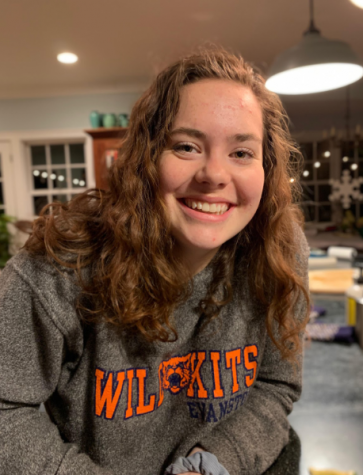Party culture exemplifies norms
December 26, 2018
Turn on any teen movie and you’ll inevitably see a party scene: red Solo cups, music, flashing lights, dancing and lots of students. This normalization of high school parties isn’t new or uncommon, and the vast majority of teenagers have reported drinking and partying during their high school years, a subsidiary of The American Addiction Centers reports.
ETHS social life is greatly affected because of how prominent party culture is, but what are the effects of this environment?
Aspects of rape culture materialize within parties and party culture. Parties can foster a social environment that normalizes and allows for harassment and assault, but as much as the two correlate and are linked, party culture does not cause rape.
Conversations around social culture have become more prevalent recently due to the Kavanaugh trial the #MeToo and #TimesUp movements. Many students even spoke out on the topic with “I believe her” posts on social media, directed towards Christine Blasey Ford.
“[The Kavanaugh trial] seemed to be a matter of [people] believ[ing] her but they just didn’t care. That’s not just them, it’s a cultural thing,” senior Riley Smith* says. “There’s a lot of talk about the liberal bubble here and the idea that we all wear this badge of being ‘liberal,’ or Democrats or whatever you want to call yourself, but one thing I think is very typical of Evanston is we talk a lot about it but we don’t show that we care.”
The social environment of a party can make it harder to call out these actions when they happen.
“Being teenagers and being in that setting makes it hard to call out harassment, especially because of the ‘boys will be boys’ thing and also blaming it on substances like alcohol or drugs, or how the victim was dressed,” junior Laurel O’Hare says.
The sentiment “boys will be boys” contributes to the stigma surrounding sexual violence survivors. This cultural acceptance of the “boys will be boys” trope not only can lead to victim shaming and blaming, but also only focusing on gender-specific idiomatic expressions can contribute to the negation of lived experiences of male and gender non-conforming survivors. In turn, cultural norms can lead to less people coming forward and speaking on their experiences. So how do we balance party culture with rape culture? How can we find a solution to this normalization of harrassment? What about the environment of party culture fosters the normalization of harassment?
Along with the relation to sexual abuse and rape culture, social spaces outside of ETHS tend to fall short on racial diversity. Even though ETHS is a diverse and somewhat liberal space, social events and parties outside of the classroom often fall short on this. Many students recognize this issue but turn a blind eye to changing the culture.
“It’s easy to say ‘yeah, [we need to have] racial equality’ but it’s also really easy to not do anything and just [continue to] talk about it, its not seen as a priority,” junior Nell Jones says.
The segregation within friend groups is born out of institutional factors.The school systems and racially segregated Evanston neighborhoods feed into a diverse, but segregated high school population. The lack of diversity within friend groups from a young age and high school clique-esque social dynamics tend to create this exclusive environment, keeping students from reaching out and making new connections with new people. Recently, students have been calling out and talking about the white exclusivity in parties and how that can be addressed within our everyday lives.
“You definitely do see that [exclusivity], but you can also see that it’s changing a little bit. You can see that the [people of color] are becoming more involved with the [white] parties and social life,” junior Austin Clark says. “Initially it’s the white people that throw the parties, and it’ll [usually be] at their houses but, you can see the black students coming more and more and staying to hang out.”
The physical manifestation of these early divides are present in the high school social culture we can observe today.
“[A lot of people] just scratch at the surface [of racial integration] and it’s easy for people to say ‘I live in Evanston, I’m done,’” Jones says.
The “liberal bubble” of ETHS can protect the idea that diversity alone is enough to be considered a progessive and equitable society, but assertions of Evanston enlightenment tend to do more harm than good.
“I feel like students get comfortable in their specific liberal bubble that they kind of forget all the other things that are happening,” Clark says.
By claiming that recognizing the issue is a solution in itself is counterproductive. Actively challenging the societal norms and expanding your social circle to different types of people can change a lot about the racial makeup and integration of ETHS social spaces.


















